
On the night of Jul 06/07, 2014, I observed the cataclysmic variable star ASAS-SN14cv. You can read more about these stars, which were both discovered only recently, at
ASAS14cv again shows smooth sinusoidal variations of amplitude 0.04 mag at mag V = 13.0 or so. ASAS14cl is too faint for me to follow.
The main setup was:
Notes from the night
Below is a graph showing the sky brightness as a function of time during the observing run.

Below is a graph showing the FWHM as a function of time during the observing run.

Here's a chart of the field of ASAS-SN14cv, which is at
RA = 17:43:48.58 Dec = +52:03:46.8 (J2000)
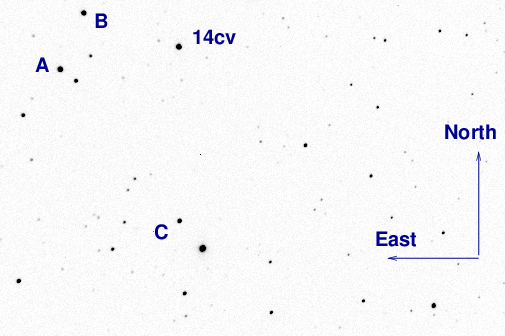
Some of the reference stars marked above have magnitudes in the UCAC4. Specifically, star "A" above is
The television camera on the finder scope shows the following when we're pointed at ASAS-14cv. North up, East left, field about 1 degree on a side.
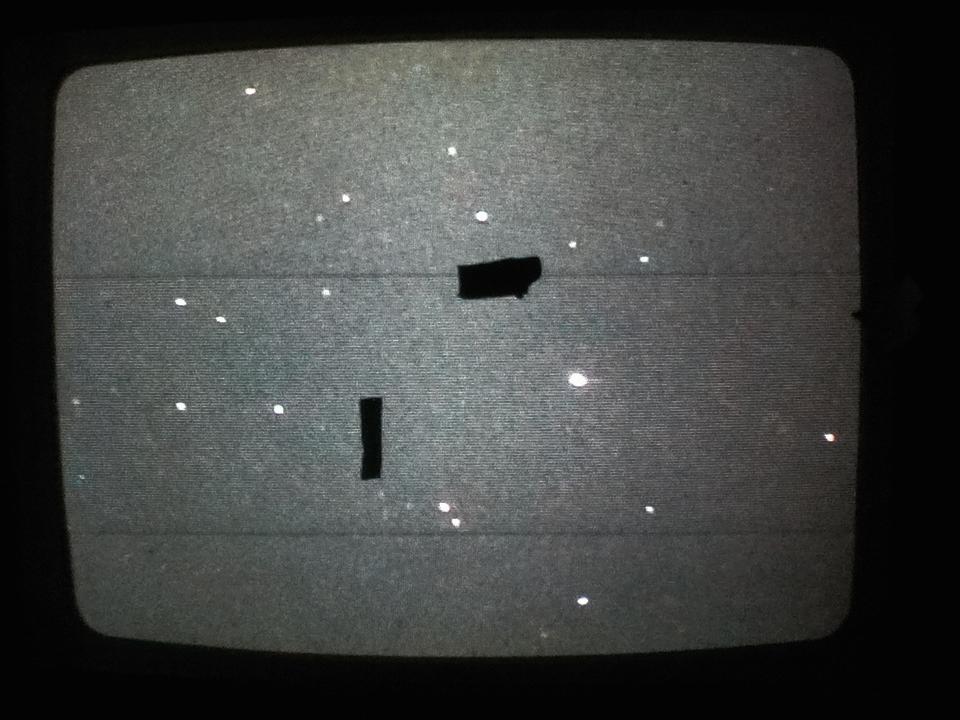
The image adjustment factor graph shows a small rise which I think is due to increasing very light cirrus.
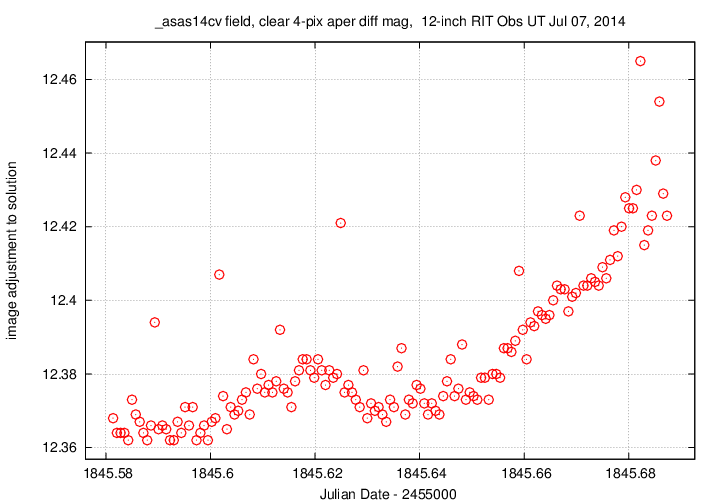
Using aperture photometry with a radius of 4 pixels (radius of 7.4 arcsec), I measured the instrumental magnitudes of a number of reference stars and the target. Following the procedures outlined by Kent Honeycutt's article on inhomogeneous ensemble photometry, I used all stars available in each image to define a reference frame, and measured each star against this frame. I used the UCAC4 V-band magnitude of star "A" to convert the ensemble instrumental magnitudes to a reported "V"-band magnitude (but remember, it's a clear filter).
Sigma-vs-mag plot:
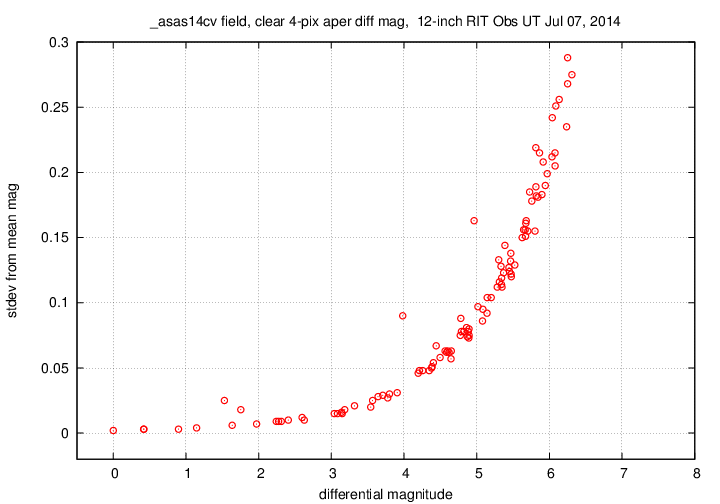
The target had a "V"-band magnitude of roughly 13.0.

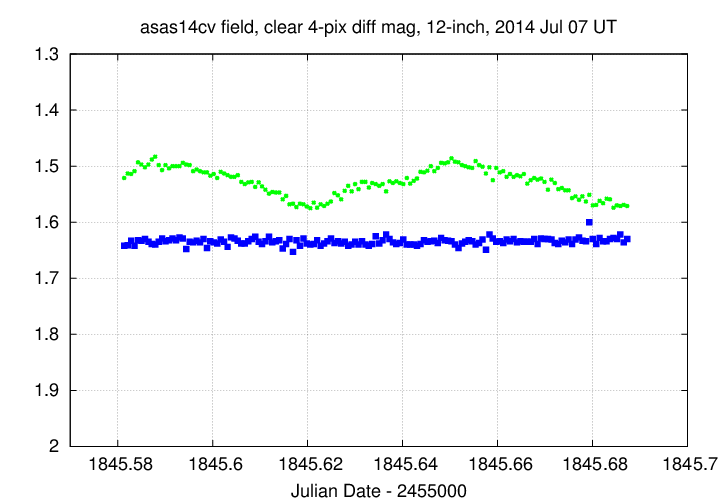
You can see my measurements of the star in the ASCII text file below. The first few lines are shown here:
# Measurements of ASAS_SN14cv made at RIT Obs, Jul 7, 2014 UT, # in fair conditions, # by Michael Richmond, using 12-inch Meade and SBIG ST-8E CCD. # Exposures 45 seconds long, no filter. # Tabulated times are midexposure (FITS header time - half exposure length) # and accurate only to +/- 1 second (??). # 'mag' is a differential magnitude based on ensemble photometry # using a circular aperture of radius 7.4 arcseconds. # which has been shifted so UCAC4 711-058151 has mag=11.518 # which is its V-band mag according to UCAC4. # # UT_day JD HJD mag uncert Jul07.08138 2456845.58138 2456845.58273 13.039 0.009 Jul07.08211 2456845.58211 2456845.58346 13.031 0.009 Jul07.08282 2456845.58282 2456845.58417 13.032 0.009
I took a few images of ASAS-14cl just as clouds were moving in. The target appears roughly as faint as it was last night, V ~ 15.9. That's too faint for me to measure accurately, so I probably would have stopped at this point even if the skies had been clear.
I'll keep checking this star, just in case it re-brightens, but if it stays faint, I'll give up on it.
Last modified 7/07/2014 by MWR.